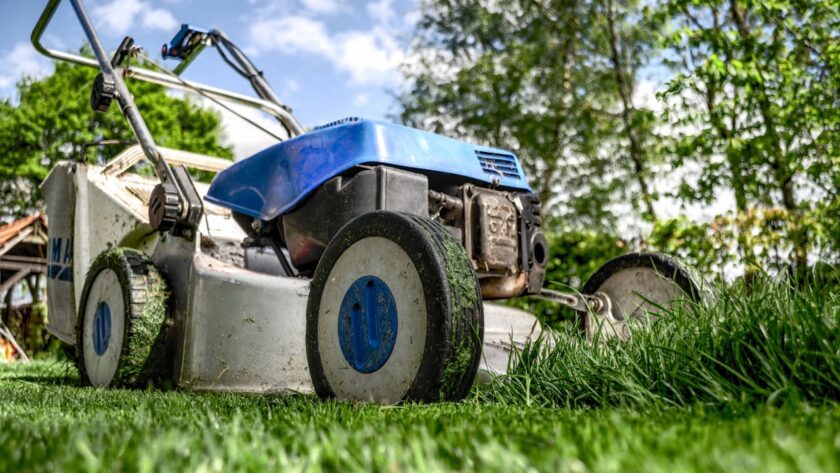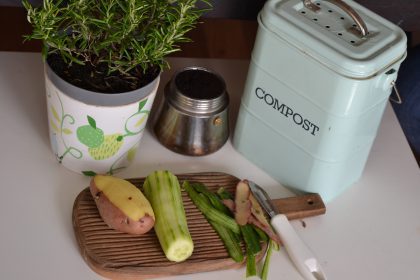Hello, everyone! Today, let’s tackle a common query that often buzzes around lawns like a persistent bee—what’s the deal with those grass clippings after you’ve given your lawn a trim?
Mulching grass clippings
When you mulch those clippings, you’re essentially giving your lawn a nutrient-packed boost. Think of it as a green elixir for your grass. As the clippings break down, they release nitrogen back into the soil, becoming a natural fertilizer. Now, why is nitrogen crucial? Well, it’s like the fuel for healthy grass growth—lush, vibrant, and resilient.
So, instead of carting away those clippings, consider letting them stay put. It’s a win-win situation. Your lawn gets the nutrients it needs, and you save yourself the trouble of disposing of the clippings. It’s all about working with nature, not against it.
And here’s a little bonus for you eco-conscious gardeners out there. Mulching your grass clippings is an environmentally friendly practice. You’re reducing waste, cutting down on the need for synthetic fertilizers, and fostering a more sustainable lawn care routine.
So, the next time you’re out there with your mower, think about embracing the circle of life for your lawn—mulch those clippings, let nature do its thing, and watch your grass thrive. Happy mulching, and here’s to a healthier, greener lawn!

Composting grass clippings
Another fantastic avenue for those grass clippings is to transform them into nutrient-rich compost. It’s like magic for your garden, and here’s the scoop on how to make it happen.
First things first, consider creating a compost pile or using a compost bin. This is where those clippings, alongside other organic materials, will work their composting magic. Now, why bother with composting? Well, it’s not just recycling, it’s supercharging your soil with a powerhouse of nutrients.
When it comes to grass clippings, they’re rich in nitrogen, a crucial player in the composting game. But to make the perfect compost symphony, you’ll want to balance it out. Enter carbon-rich materials like leaves, kitchen scraps, or shredded newspaper. It’s all about finding that sweet spot in the carbon-to-nitrogen ratio.
So, picture this: your grass clippings, some fallen leaves, maybe a few kitchen scraps—all mingling and dancing in your compost pile. It’s a symphony of decomposition that, over time, turns into ‘black gold’ for your garden.
Here’s a tip: every so often, turn that compost pile. Give it a little stir. It’s like conducting the orchestra, ensuring that every component gets its time in the spotlight. And before you know it, you’ve got nutrient-rich compost ready to enrich your soil.
So, whether you’re a seasoned composter or diving into it for the first time, remember, those grass clippings are a valuable ingredient in the composting recipe. Turn waste into gold, create a composting haven, and watch your garden flourish.
Using grass clippings with your livestock
Now, let’s talk about a clever way to repurpose those grass clippings if you happen to have some feathered or furry friends around—think chickens or rabbits. It’s not just about your lawn; it’s about creating a multi-functional, eco-friendly system.
Consider using those grass clippings as part of their bedding or even as a supplement to their diet. It’s like turning your lawn into a buffet for your animal buddies. However, and this is a crucial point, make sure those clippings are free from pesticides or herbicides. We want our animal friends to feast on the good stuff, not any unwanted chemicals.
For chickens, scattering the clippings in their coop can serve as comfortable bedding. It’s a cozy arrangement that also provides them with something to scratch and peck through—chickens love a good foraging adventure. Plus, it can contribute to managing odors and creating a healthier living environment.
And rabbits? Well, they adore fresh greens. Introduce those clippings into their diet, but do so gradually to avoid any upset tummies. It’s like bringing a bit of the outdoors to their mealtime.
Now, a word of caution—know what’s in those clippings. If you’ve been heavy-handed with pesticides or herbicides on your lawn, it’s a no-go. We want our animal pals to enjoy the clippings, and not encounter any harmful substances.
So, if you’ve got a few critters around, turn those clippings into a little treat for them. It’s a win-win—you reduce waste, and your animals get a taste of the green life. Just remember, keep it pesticide-free, and you’ve got yourself a sustainable solution.
Local love
Now, it’s time to venture into a community-minded approach for your grass clippings. Ever thought about sharing the green goodness with local farms or community gardens? It’s a fantastic way to extend the life of your clippings and build connections right in your neighborhood.
Some local farms or community gardens might be more than happy to collect your grass clippings. It’s like a mini recycling effort right in your community. Check with nearby agricultural or community organizations to see if they have a use for them. You might just be contributing to a thriving local ecosystem.
Think about it—it’s a win for you because you’re diverting waste from the landfill, and it’s a win for them because they get a valuable source of organic material for composting. It’s a collaborative effort that benefits everyone involved.
Imagine your grass clippings becoming part of a community-wide composting project. It’s not just about lawns anymore; it’s about fostering a sense of shared responsibility and sustainability.
So, take a stroll or make a call to those nearby farms or community gardens. See if your grass clippings can find a new purpose beyond your backyard. It’s a small step that can have a big impact on the local environment. Bonus getting a chance to connect with new friends!
Ever made grass tea?
Let’s brew up something special with those grass clippings—grass tea! It’s not for sipping, mind you, but your plants will surely appreciate the nutrient-rich boost. Here’s how to concoct this green elixir for your garden.
Soak your grass clippings in water, creating a nutrient-rich liquid fertilizer. It’s like making a cup of tea for your plants, only we’re using grass instead of leaves. Allow the mixture to steep for a few days, letting those nutrients infuse into the water. It’s like nature’s way of creating a potent fertilizer.
Once your grass clippings have had their steeping session, strain the mixture. We’re looking for the liquid gold, the ‘grass tea’ that’s packed with all the good stuff your plants crave. It’s a homemade fertilizer that doesn’t cost a penny.
Now, how do you use this green goodness? Simply apply the ‘grass tea’ to your plants as you would with any liquid fertilizer. It’s like giving them a spa day, a nutrient-rich bath that’ll leave them looking vibrant and healthy.
But here’s a tip—moderation is key. Don’t go overboard with the ‘grass tea.’ Your plants will appreciate a little sip, not a flood. And just like any good gardener, observe how your plants respond. You might be surprised at the results.
So, there you have it—turning grass clippings into a homemade liquid fertilizer. It’s a bit like kitchen alchemy for your garden. Happy brewing, and may your plants thrive on this green concoction.
Here’s a basic guide on how to create a nutrient-rich liquid fertilizer from grass clippings is a simple process.
Materials:
Grass Clippings: Collect fresh grass clippings from your lawn after mowing. Make sure the grass hasn’t been treated with herbicides or pesticides.
Container: Use a large, non-metallic container with a lid. This could be a bucket, trash can, or any other container large enough to hold your grass clippings.
Water: Use clean, non-chlorinated water. Rainwater or well water is ideal, but if you’re using tap water, let it sit for a day to allow chlorine to evaporate.
Stirring Stick or Tool: A stick or tool for stirring the mixture occasionally during the fermentation process.
Breathable Cloth or Lid with Holes: Cover the container with a breathable cloth or a lid with holes to allow air circulation and prevent an anaerobic (without oxygen) environment.
Steps:
Collect Clippings: Gather the fresh grass clippings from your lawn. Ensure they are free from any chemicals.
Place Clippings in Container: Fill the container with the grass clippings. Pack them loosely to allow for good water penetration.
Add Water: Pour water over the clippings until they are fully submerged. The water acts as a medium to extract nutrients from the grass.
Stir and Mix: Stir the mixture well to ensure the grass clippings are evenly distributed in the water. This helps initiate the fermentation process.
Cover and Let it Ferment: Cover the container with a breathable cloth or a lid with holes. Place the container in a shaded area to ferment. Stir the mixture every couple of days to aerate it.
Fermentation Time: Allow the mixture to ferment for about 2 to 3 weeks. During this time, the nutrients from the grass clippings will leach into the water.
Strain the Liquid: After the fermentation period, strain the liquid to remove the solid residue. You can use a fine mesh sieve, cheesecloth, or burlap for this purpose.
Dilute and Use: Dilute the strained liquid fertilizer with water before using it on your plants. A common ratio is about 10 parts water to 1 part grass clippings liquid. Adjust the dilution based on your plants’ needs.
Apply to Plants: Use the liquid fertilizer to water your plants. Apply it directly to the soil around the base of the plants.
Remember that this homemade liquid fertilizer may have a strong odor during the fermentation process. If the smell becomes unpleasant, you can dilute the liquid further or mix it with more water before applying it to your plants.
Final to do with your grass clippings
Let’s wrap up our guide through the various destinations for your grass clippings by exploring a community-wide option—municipal green waste recycling programs. Many cities have these eco-friendly initiatives that welcome grass clippings with open arms. It’s like a coordinated effort to give green waste a new purpose beyond our yards.
Check with your local waste management or recycling center to see if they have a green waste recycling program. They often have specific guidelines on how to properly dispose of grass clippings in an environmentally responsible manner.
It’s a community-level commitment to sustainability. By participating in these programs, you’re contributing to a broader effort to reduce landfill waste and promote responsible waste disposal.
Remember, each municipality might have its own set of rules, so checking in with the local waste management or recycling center is key. They’ll guide you on how to package those clippings and where to drop them off.
So, next time you’re wondering about the fate of your grass clippings, think about the bigger picture. Municipal green waste recycling programs are there to turn your green waste into a community resource. It’s a simple yet impactful way to contribute to a greener, cleaner future. Happy recycling, everyone!
Thoughts and a word of warning
Before we wrap up, let’s sprinkle in a couple of essential tips for making the most of your grass clippings. First and foremost, be mindful of what’s on your grass before you mow. Avoid using clippings treated with herbicides or pesticides. We want those chemicals nowhere near your plants or the composting process. It’s like giving your garden a clean, green diet—free from any harmful additives.
Now, onto the practical side of mowing. Timing matters. Aim to mow when the grass is dry. It’s not just about convenience; it prevents clumping and ensures those clippings are evenly distributed. Picture it like a gentle rain of nutrients falling onto your lawn.
So, whether you’re tending to your garden or contributing to the compost pile, these little precautions go a long way. A healthy, vibrant lawn starts with the right ingredients and a sprinkle of thoughtful care. Happy mowing, and may your garden flourish with every snip of the mower!










